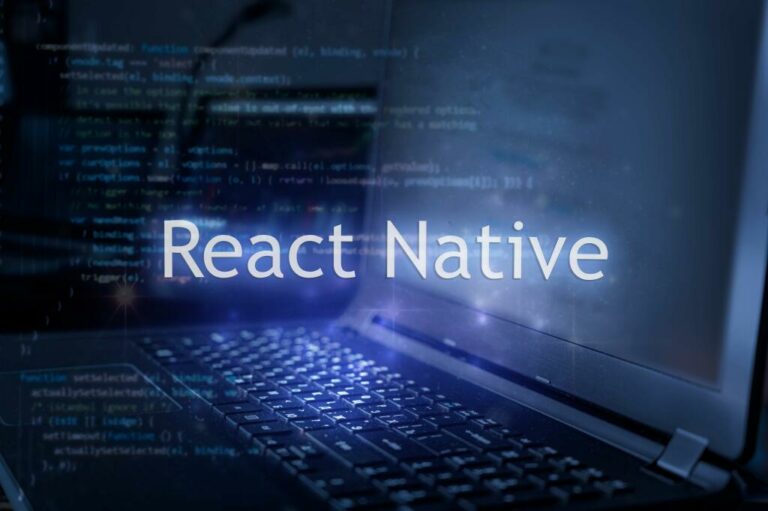Content
The teams also use tools like AWS X-Ray and AWS CloudTrail to monitor application performance and usage in the maintenance stage. Over time, as technology progresses, they might also decide to create a new application on modern systems and stop using the current one. An AMS provider offers IT and application management expertise so that businesses don’t need to rely on internal resources to maintain critical software systems. Facilitating continued productivity, reducing downtime, optimizing performance, and ensuring applications evolve in step with wider business or industry changes are all key challenges application management addresses. The attention to user experience from application management and the addition of new features help spark new ideas by making it seamless for end-users to interact with business apps. Meanwhile, proactive maintenance, monitoring, and updates free up time spent in meetings figuring out how to fix problems with applications to instead focus on innovation and growth.
- Advisory services are useful in the planning mode of implementing new technology applications within a company.
- It mainly includes development, testing, bug fixing, quality assurance, and deployment.
- Everyone knows the work that has been done so far and the tasks that still need to be picked up.
- If you apply digitally to a new job, your digital cover letter will likely be the first thing the employer sees above your resume.
- This is a specialized expertise that someone in a typical IT department may not be aware of.
- If you have references or referrals, be sure to refer to those individuals by name so a prospective employer can reach out to them quickly and easily.
ALM provides a clear path of how software or application will turn out well before teams start building it. This provides them with a vision of optimizing and executing the process well, hence enabling them to deliver faster. The development and testing teams also plan a timeline for their software projects. They identify any interdependencies among the requirements and decide the order in which to complete and release new features. The tools and techniques used in ALM create a consistent project view for all teams.
Application management is a set of processes that cover the operation, maintenance, version control, and updates across a software application’s lifecycle. Some of these apps are mission-critical—that is, the normal operation of your business depends on them working whenever they’re needed. Other apps aren’t mission-critical but serve important functions in contributing to the smooth running of operations and, in the long term, to the success of an organization. By ensuring that business functions are being properly addressed with modern applications, business process solutions can be brought to market more efficiently, quickly, and at a lower total cost.
Product lifecycle management
This transparency helps to promote collaboration and empathy within the team. As a result, the project’s plan can accommodate the team’s needs better and help to streamline a process that works well for everybody. Proper planning of a project goes a long way in ensuring that you complete it faster than an unplanned stint.
These services manage highly dynamic cloud resources at a massive scale while offering a single control plane for management. You can also use AWS Management and Governance services to assess resource use and identify ways to reduce costs. Some AM processes include Application Lifecycle Management and Application Performance Management .
Application Governance (estimation + planning)
Application management is a set of processes around governance that ensures that the application performance is at its crescendo with great efficiency. Application management also entails documentation both technical and non-technical in nature. Application lifecycle management describes the ecosystem that manages an application from cradle to grave. ALM is composed of stakeholders, ALM tools, and a management process that spans each phase of an application’s existence. Surefront is a Product Lifecycle Management platform that facilitates collaboration between cross-functional teams. Not only does it serve as a central repository and single source of truth for product data, but it also allows development teams to collaborate on products with object-oriented communications.
By providing modern applications to every business function in an enterprise, business processes can be quickly delivered to the market effectively, efficiently, and faster, and at a lower cost. On effective management of applications, resources are freed up, and they can focus their attention on new business challenges and other pertinent issues. This post aims to provide you with a basic idea of understanding and implementing ALM in your project. Understanding application management services is important to help companies overcome challenges in the costs and work required to maintain information technology applications. The goal of an AMS provider is to make the systems run more efficiently with application enhancements, upgrades and optimizations.
The modern business environment doesn’t adhere to traditional working hours. Hybrid workplaces are the norm, and most companies have a number of employees application management outsourcing working remotely full-time. Remote or hybrid employees regularly have flexitime contracts, which means they access business applications 24/7, not 9-5.
Today we see more and more enterprises adopting agile methodology over the traditional waterfall model and moving from DevOps to more cloud-based native applications. In parallel, there is also a continuous evolution in application lifecycle management tools and processes. This is to ensure that in an enterprise, if there are multiple applications, then the ALM processes and tools for each of them are in sync, while they transition from legacy methods to a more modern and flexible way. Application Managers are IT professionals who own the AM process that manages the application software lifecycle within the enterprise. In agile software development, continuous build and integrations are essential. Companies don’t wait for the completion of all features and release them at once.
Data Fabric vs. Data Mesh: The Difference
It can be very difficult to find the right database and application management skills needed to manage your core business applications all in one person. With AMS, you can turn to a team with individuals who are each specialized in a different suite of apps, programming languages and have the database expertise to manage your applications. Then you can scale up or down this service as needed so you’re never paying for more than you need or short of resources. Applications can stay relevant by being fine-tuned, updated, and by resolving technical integration issues with new systems or processes.

Application lifestyle management integrates tools, requirements, and timelines. An integrated system will certainly work better than unintegrated and unconnected models, helping you to avoid unnecessary steps, save time, and eventually increase your speed. Product lifecycle management manages the design, production, https://globalcloudteam.com/ and sale of physical products, especially in the manufacturing and engineering industries. Kimberlee Leonard has taken her professional experience as an insurance agency owner and financial advisor and translated that into a finance writing career that helps business owners and professionals succeed.
Agile development teams automate deployment to speed up the release of new features and updates. Tools and services like AWS CodeDeploy provide better deployment control and minimize errors in production. The efficient management of specifications, people, technology, and software development requirements is known as Application Lifecycle Management. It covers the planning, legal analysis, requirements analysis, resources analysis, development, testing, bug fixes, and deployment of the application to the end-users.
The ability to innovate depends as much on your organization’s technology ecosystem as on the brainpower of your people. When applications are mismanaged or not managed at all, vital business functions are either absent or become sources of frustration. IT resources become stretched, and the platform for coming up with ideas isn’t there. It’s feasible for each of these distinct domains to co-exist alongside application management in your business, but application management plays the most central role of them all in today’s software-led companies.
VMware Workspace ONE: Mobile Application Management
Run Enterprise Apps Anywhere Run enterprise apps and platform services at scale across public and telco clouds, data centers and edge environments. Bamboo is one of the premium build, test, and deploy continuous integration tools. After every commit, it creates pipelines and starts checking the build status code.
By outsourcing this service, businesses save on hiring and training internal people. The AMS provider brings to the table a proven set of skills and expertise to help keep the company’s applications working optimally. By leveraging highly available infrastructure with inbuilt redundancies, issues such as downtime become less likely. Application management can also enhance the end-user experience by constantly monitoring user issues and also incorporating new capabilities in the application. This new user experience will help in increasing productivity, and also accelerate faster adoption of new features. These are staff members from business functions, who basically view applications and application management from a perspective of bottom-line benefit, revenue impact, and productivity.
When applications are efficiently managed, more IT resources are available to focus on new business challenges and competitive issues. When businesses increase the number of applications, application portfolio management also comes into the picture. Automating application governance increases the speed of the development of the app.
How To Choose an AMS Provider
I understand that the data I am submitting will be used to provide me with the above-described products and/or services and communications in connection therewith. Writing a cover letter is one of the best professional skills you can cultivate, so start practicing ASAP. A good cover letter might make the difference between you and a similar job candidate for a top position.
Application development
In addition, it is responsible for enhancing the coordination between the development and non-development teams. ALM is also known as integrated application lifecycle management because various software experts, like developers, analysts, testers, and change managers, work together throughout the application life cycle. Collaboration among teams and the use of various supporting tools ensure that application development meets business goals and that the project succeeds. Since the software development process requires multiple people to be involved in various capacities, they need a rulebook to facilitate interaction. ALM helps by defining the dynamics of this coordination in terms of timeframes, tasks, limits, resources, roles, and much more. As everything is transparent in ALM, employees and managers can easily see a task’s status or bugs in the application.
Introducing a new process, replacing an existing process with a better one, or coming up with new ideas for products and services all have the power to boost your bottom line. These bottom-line impacts include revenue increases, substantial cost reductions, or productivity improvements. Operate apps and infrastructure consistently, with unified governance and visibility into performance and costs across clouds. Multi-cloud made easy with a family of multi-cloud services designed to build, run, manage and secure any app on any cloud. Automate & Optimize Apps & Clouds Operate apps and infrastructure consistently, with unified governance and visibility into performance and costs across clouds.
Developers:
IT support is a team, either in-house or outsourced, to whom you report issues with malfunctioning software or hardware. An application management system monitors all the components of applications to ensure their availability. While such system-based monitoring is important, application management is larger in scope than just availability. Developers, DevOps, and DevSecOps teams who write code for custom applications, release high-quality updates at regular intervals, and take responsibility for securing apps.
One goal of ALM is to combine these multiple development practices into a comprehensive management methodology that encompasses legacy, agile, and cloud-native development. Access Any App on Any Device Empower your employees to be productive from anywhere, with secure, frictionless access to enterprise apps from any device. VMware Cross-Cloud™ services enable organizations to unlock the potential of multi-cloud with enterprise security and resiliency.

